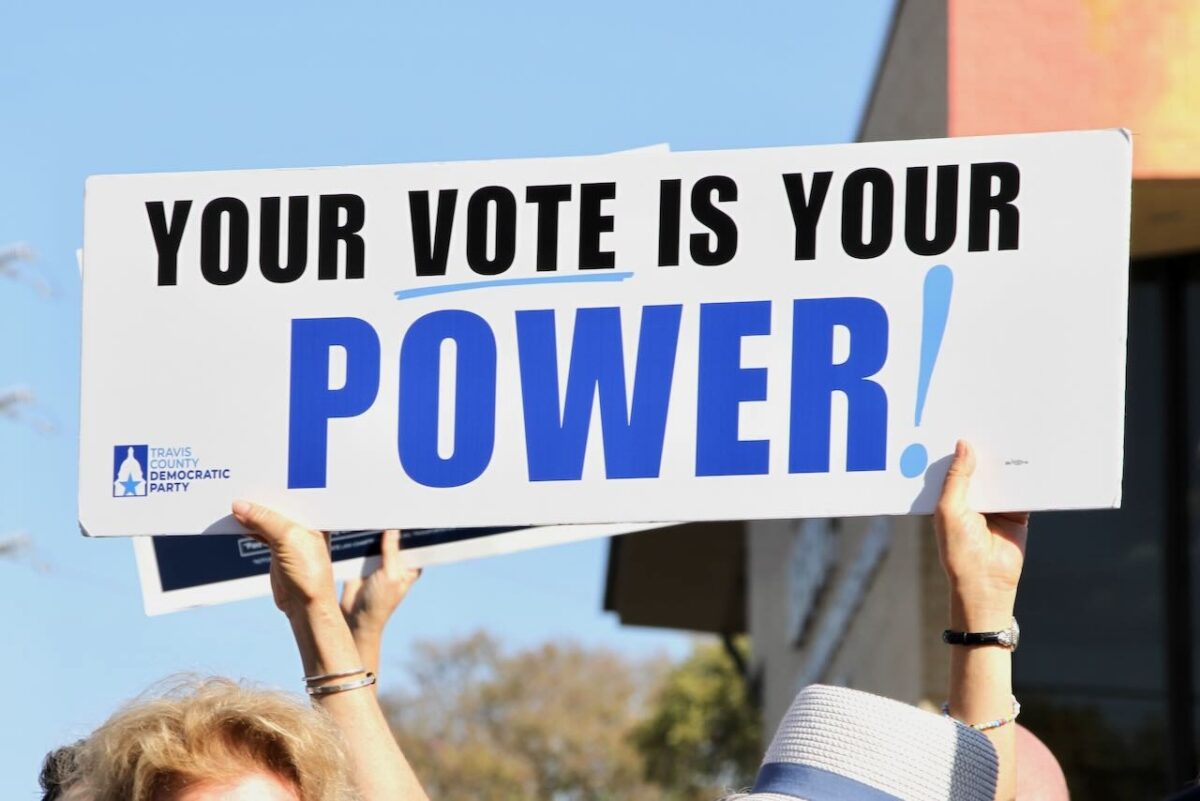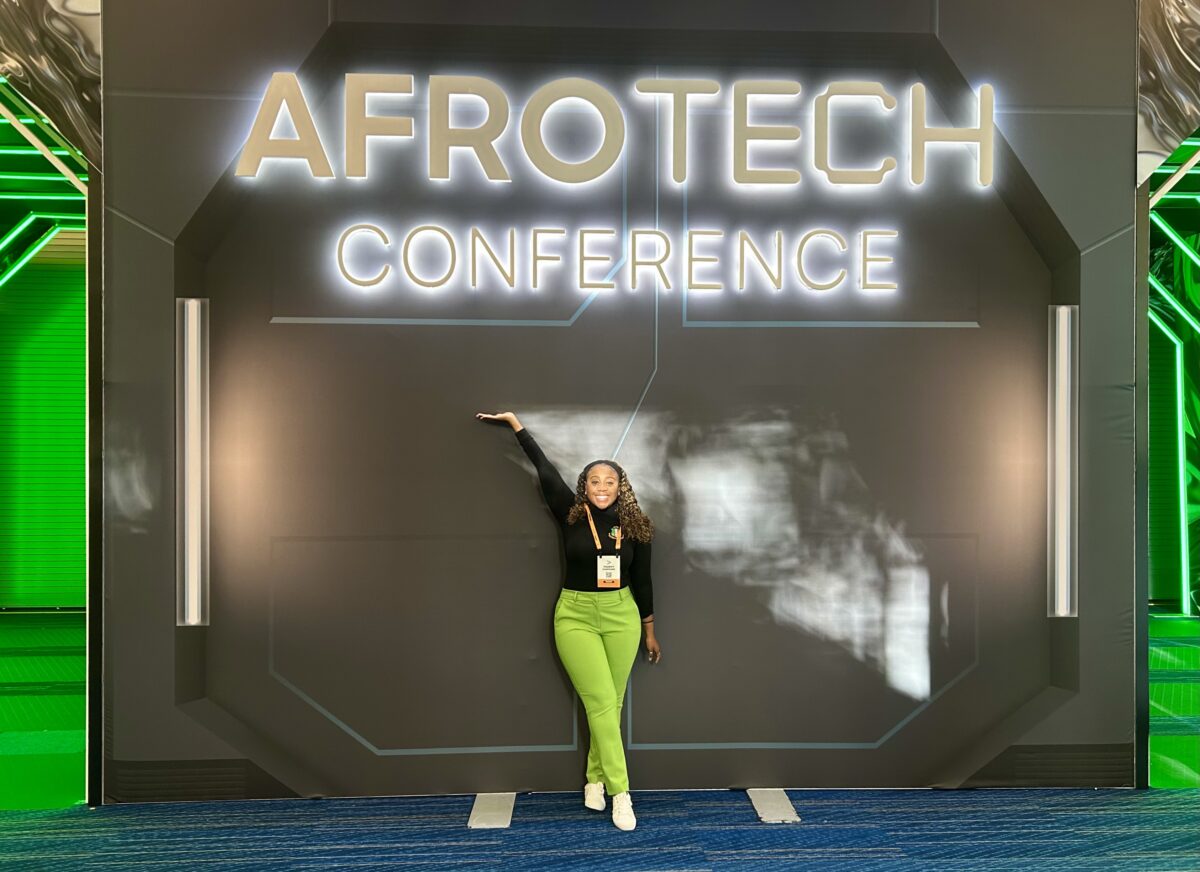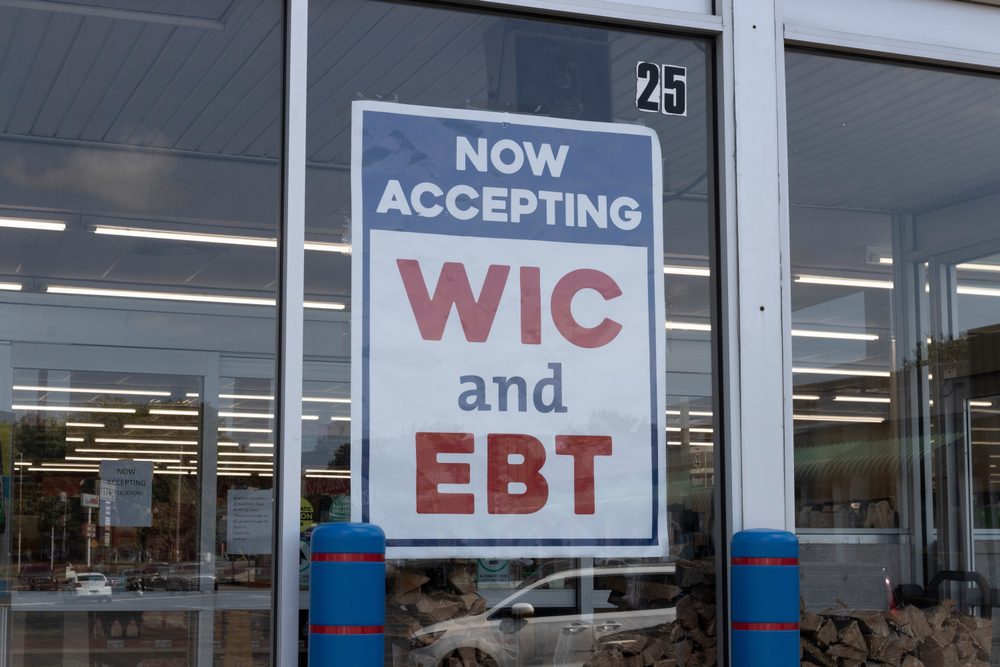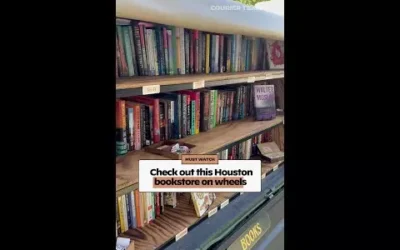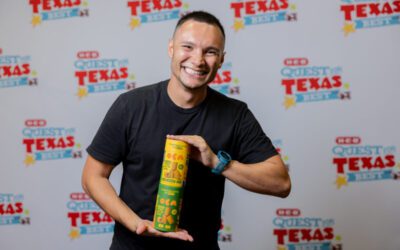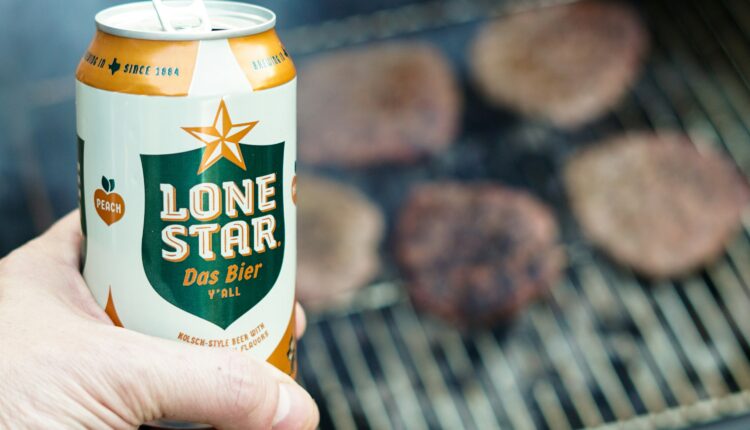
Holding a can of Lone Star Beer in front of a grill. (Thomas Park/Unsplash)
Every business needs to get its start somewhere. For these Texas brands and products, their origin stories are just as intriguing as their massive growth.
With the state’s extensive history and large population, it’s no surprise that Texas has a lot of legendary brands. At some point in your life, you’ve likely sipped on a refreshing Dr Pepper, shopped at H-E-B, or taken to the skies on a Southwest Airlines flight.
While these massive brands are well-known today, their origin stories are often more humble—and in many cases, a bit quirky. Here’s a look at the history of nine classic Texas brands and products.
1. Dr Pepper
If you took chemistry in high school or college, you learned a little bit about the periodic table—my high school class had to create and present our own elements—and how different chemical bonds might react. What you probably didn’t do was invent a new drink.
Charles Alderton was working as a pharmacist at Morrison’s Old Corner Drug Store in Waco when he concocted a beverage that tickled his taste buds. He shared it with Wade Morrison, the store owner, who enjoyed it and started selling it to customers. The early name of the drink was “Waco” before Morrison changed it to “Dr. Pepper” (the name has since dropped the period).
Rumors have persisted for nearly a century that Dr. Pepper contains prune juice. The company has dispelled that rumor, though the combination of 23 flavors and ingredients is highly confidential and reportedly kept in two separate locations in Dallas banks. The taste of Dr Pepper is so unique that the American Food and Drug Administration has said it’s not a cola, root beer, or fruit-flavored soft drink. Rather, it’s a “pepper soda,” which is probably not the most appealing name for someone who hasn’t tried it. Despite that, Dr Pepper was the second highest-selling soft drink in the U.S. this past year.
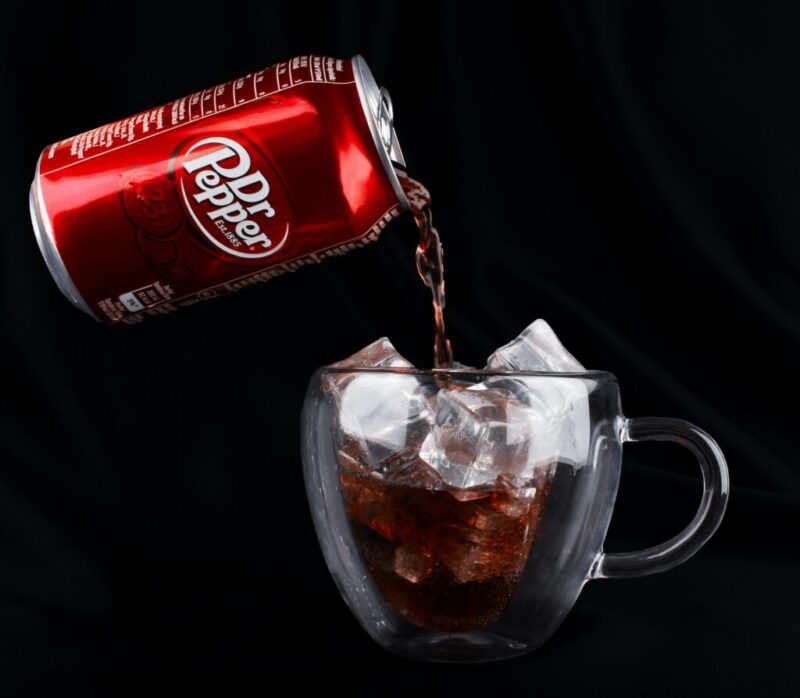
Dr Pepper can being poured into a mug. (Yana SmetanaUnsplash)
2. Southwest Airlines
Some people say they need a little liquid courage to do something nerve-wracking, like sing karaoke or tell a friend how they really feel. For Rollin King and Herb Kelleher, that liquid courage led to the development of a new airline.
In 1966, King and Kelleher were at St. Anthony Club in San Antonio. They sketched out plans on a cocktail napkin for an airline that would connect the three biggest cities in Texas: Houston, Dallas, and San Antonio. The company was incorporated as Air Southwest on March 15, 1967, with the new airline purchasing secondhand Lockheed L-188 Electras from American Airlines.
On June 18, 1971, the airline, now known as Southwest Airlines, first began service out of Dallas’s Love Field. That name was fitting since flight attendants served “Love Bites” and airport employees pulled tickets from “Love Machines.” Southwest was even initially listed under the symbol LUV on the New York Stock Exchange. Today, Southwest serves 42 states and several Central American destinations, and its “bags fly free” policy is a hit with travelers.

Takeoff of a Boeing 737 from Southwest Airlines. (Sven Piper/Unsplash)
3. H-E-B
The current slogan for this Texas supermarket chain is “Here, Everything’s Better,” though the H-E-B initials are actually a reference to Howard Edward Butt, the youngest son of Florence Thornton Butt.
We’re hopping all the way back to 1905. Florence had just moved her family to Kerrville and taken out a $60 loan. She used the money to start Mrs. C. C. Butt’s Staple and Fancy Grocery on the ground floor of her family’s home, with Howard delivering groceries via wagon. The business did well enough, but it was when Florence turned control over to Howard in 1919 that the company’s fortunes really started improving.
Howard implemented several changes that helped lower costs and boost profits, including distribution innovations, a new cash-and-carry self-service system, and the addition of a meat market. The company changed its name to C.C. Butt Cash Grocery and eventually expanded to Central and Southwest Texas. In 1942, the first H-E-B opened in San Antonio, which was also the same year Butt introduced frozen foods and installed air-conditioning in stores—a hugely important thing in Texas. The Butt family still owns 90% of the company today, with the remaining 10% split among employees.
4. Buc-ee’s
One of the most welcome sights on the road when you need a bathroom break, Buc-ee’s is a mainstay of Texas with its clean bathrooms, ample fuel pumps, and tasty treats. They’re all around Texas and have expanded to several other states. I know several people who do not live in Texas yet have Buc-ee’s memorabilia, so their merch game is very strong, too.
The company got its start in 1982 when Arch “Beaver” Aplin partnered to open a store in Clute. The inspiration for the name? A dog and a toothpaste brand, plus Aplin’s own childhood nickname. Aplin’s mom nicknamed him “Beaver” as a child, and he was intrigued by the Ipana toothpaste mascot, Bucky the Beaver. Aplin’s pet labrador retriever was named Buck; the trifecta of names led to Buc-ee’s with a beaver mascot.
Buc-ee’s holds a pair of world records. The Luling location is the largest convenience store in the world, clocking in at 75,593 square feet. Buc-ee’s also sports the longest car wash, with 255 feet of conveyor. That’s one thorough clean.

A 60-pump Buc-ee’s convenience store and gas station north of San Antonio. (Mark Bonica/CC BY 2.0)
5. Half Price Books
Few things are as cozy as curling up under a blanket with a good read. Pat Anderson and Ken Gjemre, a pair of self-described bibliophiles, thought other people would enjoy that vibe. They opened Half Price Books on July 27, 1972, inside of an old laundromat in Dallas.
The founders also understood that some folks don’t want to keep a book after reading it, which became a key part of the company’s growth. Claiming, “We buy and sell everything ever printed or recorded (except yesterday’s newspaper),” the store continued to evolve and expand. So many people showed up that Gjemre commented, “You could stir them with a stick.”
As far as we know, customers have never had to dodge a giant stick coming down from the ceiling, though Half Price Books has grown to more than 100 stores nationwide. It’s the largest family-owned retailer in America for new and used books, and the company has partnered with literacy programs and charities while introducing sustainable practices within stores.
6. Blue Bell Creameries
Whether you get excited hearing an ice cream truck off in the distance or go mad at the same song repeating for hours on end, we can all agree that a serving of ice cream is a delightful treat. The founders of Blue Bell Creameries felt the same way—though that wasn’t the company’s main product at first.
A group of local businessmen founded Brenham Creamery Company in 1907. They purchased excess cream from local dairy farmers and converted it to butter, selling it to people in Brenham and the surrounding areas. In 1911, the company started producing small batches of ice cream, delivering them via horse and wagon.
Alas, in 1919, the company was struggling. In a last-ditch effort, it hired E.F. Kruse, a 23-year-old former schoolteacher, to run the show. Kruse initially refused a salary so the company could get back on its feet, and he helped boost productivity to the point of profitability. Kruse also suggested the name Blue Bell Creameries in honor of his favorite wildflower, the Texas bluebell. The name change became official in 1930 and has delighted Texans ever since, with the company expanding outside of the Lone Star State in 1989.
7. Lone Star Beer
“The National Beer of Texas” is a staple at backyard BBQs, river floats, and live concerts. Adolphus Busch—the same man who started Anheuser-Busch—began the company back in 1884 with a group of San Antonio businessmen. Lone Star Brewery was the first large mechanized brewery in Texas.
Though the brewery did well initially, selling 65,000 barrels of beer by 1903, Prohibition hit hard in the 1920s. A soft drink called Tango didn’t move the needle, and when Prohibition ended, the company moved to a new brewery. The old one is now home to the San Antonio Museum of Art.
Lone Star has continued to grow in popularity over the years with some notable endorsements. Former marketing and promotions manager Jerry Retzloff got his pal Willie Nelson to drink Lone Star onstage, the brand sponsored the first Austin City Limits festival in 1974, and the beer is alluded to in “King of the Hill” (under the guise of Alamo Beer). The giant armadillo mascot and the riddle under every bottlecap are other charming elements of the brand.
8. Jim’s Restaurants
Germano “Jim” Hasslocher was a young entrepreneur in 1947, and he opened up a bicycle rental business at the front gate of San Antonio’s Brackenridge Park. Realizing that those bikers would get hungry after a long day of pedaling, he added sliced, ice-cold watermelon as an additional option.
He met his future wife and business partner, Veva Ball, at the watermelon stand. The two quickly expanded to selling charcoal-broiled hamburgers, which eventually led to the Frontier Drive-In. As word spread about the burgers and shakes, Hasslocher parlayed that success into Jim’s, the first of which opened in 1963.
Today, there are several Jim’s Restaurants across Austin and San Antonio, with the friendly cowboy mascot dotting the “i” in Jim’s name. Frontier Restaurants, the parent company of Jim’s, also operates The Magic Time Machine restaurants in San Antonio and Dallas, as well as San Antonio’s Frontier Burger and La Fonda Alamo Heights.
9. Stadium nachos
This one isn’t a brand, per se, but if you’ve ever chowed down on a helping of nachos at the ballpark, you’ve got the Texas Rangers to thank. More specifically, you can thank Frank Liberto, who created a substance in 1976 that’s not even legally considered cheese. His orange-tinted sauce arrived in cans, didn’t require refrigeration, and could easily fit into pumps.
The Rangers were sold. They purchased the idea from Liberto and began selling the cheesy nachos in the ballpark. The year the team introduced them, the Rangers sold $800,000 worth of nachos. Meanwhile, Liberto founded Ricos Products and is known as the “Father of Nachos.” We’d say both sides won the deal.
This article first appeared on Good Info News Wire and is republished here under a Creative Commons license.







